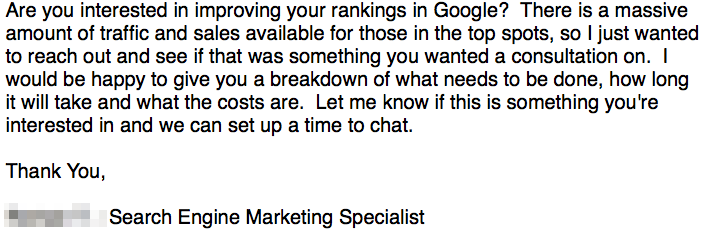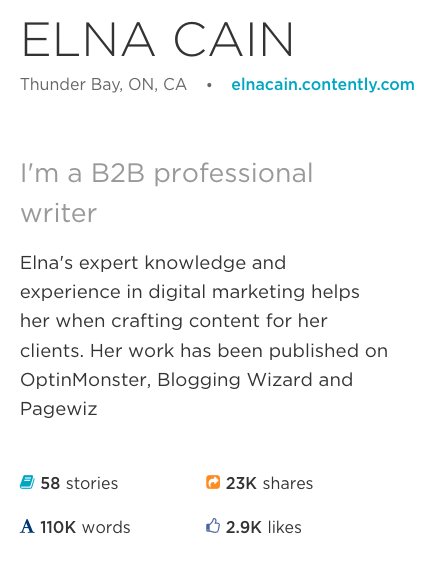Let me guess:
It’s been three weeks and you haven’t heard from any of the pitches you sent out, right? You thought all you had to do as a new freelance writer was pitch. Nothing else eh?
I’ve talked a lot about making mistakes as a new freelance writer on this blog. It’s because when I first started out, I made a lot of mistakes. Heck, I still do on occasion!

But, one area where I perfected my skill was with my pitch. Over time I developed a pitch with a 75% closing rate. Not bad right?
When I was new, however, my pitch went through a lot of tweaks to get it to convert higher. And of course, the more gigs I landed the more proof I could show potential clients that I was a legit professional writer.
You’re new though and you may not have a lot of credibility behind you yet. That’s okay, because if you can whip up a stellar pitch, you are more likely to land that gig.
To help you achieve better results with your pitch, here are 14 mistakes a lot of newbie freelance writers make when they pitch.
1. Your Pitch is Too Long

Part of my course package is offering a free pitch audit. I review your pitch and offer suggestions. One of the most common mistakes is having a long pitch.
If you’re pitching to a job ad or to an editor, then the person reviewing your pitch are also reviewing hundreds of other people’s pitches. So, it’s in the best interest to you to summarize your main points when you pitch.
Being succinct is key.
So, what do you include in your pitch? Here are the basics:
- Where you saw the job ad
- Your relevant experience
- Samples
- Why you would be good for the writing gig
There’s no need to mention where you went to school, how many years you worked as a teacher or that you absolutely love to write.
2. Not Reading the Job Ad
I think this should have been number one.
Practically every new freelance writer fails to read the job ad thoroughly. Maybe they’ve read a few already and so they get the gist of each job ad.
But, since the people who post job ads know that their ad will be viewed by hundreds of potential writers, they make sure as a way to pare down the list, to provide unusual or specific requirements.
For example, a job ad might say you have to use a certain phrase in your subject line like: WOODCHUCK. Others want to know three books you’ve read about their niche.
This job ad had these specific criteria for applying:

It states that your samples must contain images. If you’re new to freelance writing and only have PDF’s as samples, make sure you include an image too.
Also, any samples you do send don’t HAVE to be relevant, which might be a good thing for new freelance writers trying to break into a new niche.
Reading the entire job ad will help your pitch stand out when half of the other potentials might fail to read the pitch thoroughly.
3. Using a Template

Okay. For some freelance writers, having a template is all they use when they pitch. They don’t even customize it.
And you know what?
It can totally work. Brent Jones was able to send out 88 pitches in one day by using a template. But, for me, I like to err on the side of caution.
Sending a generic pitch just doesn’t stand out to a potential client. Personally, any pitch I receive that appears generic I chuck in the trash.
For example, I get pitches about improving my ranking in Google or how to improve my SEO ALL.THE.TIME.
But, all of them are generic pitches.

It’s impersonal, doesn’t relate to me or my brand, and offers nothing special.
So, what are you suppose to do when you want to pitch? Draft a completely new pitch each and every time?
Well no. I mentioned in my previous post that it’s okay to use a pitching template. Just makes sure to customize it for each pitch you send out 🙂
That means providing relevant samples, tweaking your experience (if it’s a different niche), highlighting your successes that are relevant and anything else to personalize it.
4. Failing to Research the Company or Magazine
One thing seasoned freelance writers do that new ones fail to do is whenever we pitch, we make sure to research the company or blog.
This can give us insight into their:
- Brand
- Their company values
- What type of business it is
- Who’s who in the company
- If they have a blog
- What type of content is on their blog (topics, length, format etc…)
Just by doing a quick 10 minute look at their site can give you a lot of information on who to send your pitch to.
So, next time you go pitching, make sure to find out more about the company or blog owner.
5. Using Sir or Madam
Growing up I’m sure you were told the polite way to talk to others is to use sir or madam right?
While this is the preferred way to talk to others of authority, it’s not online. Company owners, start-up head honchos and small business owners like to be called by their names.
If they have an About page or Team page, it’s easy to find out who’s who. Knowing this, you can personalize your pitch and include the marketers name or blog owner’s name.
6. Attaching a Résume

Oh no you didn’t!
If you’re a new freelance writer I know you might be tempted to attach your resume to your pitch. Unless the job ad asks for it, DON’T.DO.It.
Why?
Because most people on the other end of the receiving the pitch emails treat any attachments as a virus. They probably get hundreds of email pitches and ones with an attachment surely are put in the trash.
If you want to send a resume, you can link to your LinkedIn profile. But, listen carefully here:
As an online freelance writer, your résume is now your portfolio. This shows your writing ability and where you write.
That’s all that editors, bloggers and small business owners need to see.
If you don’t have a writer website, you can create a portfolio on Contently. It’s free and easy to use.

7. Not Explaining Your Results
Now listen:
I know you’re brand new to freelance writing.
I know you probably only have one or two samples of your writing.
And I know you are working hard at creating a high converting pitch.
But, one of the main things head marketer at companies and small business owners look for is if your writing produces results.
Now, you may not know what kinds of results they want, but typically it’s seeing the percent of their visitors turn into leads by taking some action like signing up to their email list.
Other metrics include ranking in Google for a keyword, high numbers of social shares and comments, building out their content on their blog, and generating sales.
I know.
You’re writing is a tall order. But, if you can draft a piece of content that makes someone take action, then you are producing results.
Hint: saving time can also be an indirect way to producing results. You can save time for the potential client by having a properly formatted post, uploading it to their CMS, creating and optimizing images and promoting it on your social media channels.
8. Not Having the Right Samples
For most job ads, you’re going to have to have relevant samples when you send out your pitches. If you’re responding to a ad for a hydroponics writer and you provide a sample of getting your child to sleep, you have less chance of landing that gig than someone who actually DID provide relevant samples.
And this boils down to finding a niche. Once you have a niche or two you can start creating samples around them.
9. Having Grammar Errors in Your Pitch
I know it goes without saying, but make sure you don’t have any grammar or spelling errors in your pitch. This is the first time a potential client will view your writing skills.
Now, I know I make a ton of grammar errors. I won’t lie to you. While I do use Grammarly to fix those silly errors, I also have a copyeditor to make sure what I’m saying flows better and is accurate.
So, have someone review your pitch before you send it out. Ask a fellow freelance writer, a family member or friend to give it a read and to mark any grammar errors they may find.
10. Lacking Confidence

This is a tough one for newbies. My confidence was shaken early on and I seriously considered giving up. I mean, I’M NOT A WRITER – I’m a mom with a background in Psychology.
It took some thinking and my husband to convince me that I CAN do this. You don’t need a degree to be a writer. I even created my Become a Rockstar Freelance Writer free course to tackle those mind blocks.
Anyone can be a freelance writer. If you have a basic understand of the English language, have the passion and persistence to learn new skills, you can be a freelance writer.
But, I know it’s hard to convey that confidence in your pitch email. That’s why I see a lot of new writers use phrases like:
- I think I can write…
- I might be able to do…
- I’m new to…
- I just started…
Remember, you have to convey you’re the expert in writing. Companies, bloggers, small business owners and brands come to you for the knowledge you have for creating compelling content.
11. Not Circling Back
One of the biggest missed chances new freelance writers make is failing to follow up on potential leads. Just because you don’t hear back from a pitch you sent out, doesn’t mean they might consider you in the future.
Maybe the marketer or blog owner didn’t find a freelance writer from the job ad they sent out. This might be a good time – a week or two later – to follow up.
You can also follow up on older leads and start a communication with them. You never know! They may not be happy with their current writer or they may have a spot open for more writers.
12. Not Pitching Enough
Let me ask you a question:
How much time to you give yourself to pitching?
Is it an hour a day? Three hours a week? Whenever you can squeeze it in?
If you don’t already know, if you’re a new freelance writer without a full list of clients, your job is securing more work. And the best way to do that is to pitch often and pitch a lot.
In my Writeto1k course, I have pitching challenges where I offer $100 to the winner with the most pitches sent – more points for when you land a gig. (I’m actually going to do another one soon).
These challenges are meant to motivate my course buyers and get out there and pitch. I suggest to pitch at least 5 times a day every day during the entire challenge (a month usually).
It’s a fact that the more you pitch, the higher chance you have at landing a gig. The winner of my first pitching challenge said this,
I sent 5 or more pitches on the days that I was pitching. I got into a groove and pretty soon the pitching process became second nature.
And it paid off.
I landed several new clients, some with recurring gigs, and one really big client, who hired me on for exclusive writing and editing.
Cheri Read, who is a student in my course didn’t win the pitching challenge, but she still landed work.
That same month, Elna hosted a pitching challenge in her private Facebook group. Since I knew that landing gigs was a little bit of a numbers game in the beginning, I saw this as the perfect opportunity to get a writing job under my belt. And you know what?
I landed four freelance writing jobs!
I didn’t win the challenge, but I didn’t care. I had finally scored my first writing assignments and felt like I was on top of the world.
So, get out there and pitch!
13. Not Keeping Track of Your Pitches

When I first started pitching, I did not keep track of my pitches.
I visited job boards and just sent pitches to ads that were in my niches at that time. It wasn’t until a month or two into freelance writing that I needed a system for organizing my pitches.
So I created a sheet to keep track of where I found the job ad and what the rate was (if it was mentioned). Once I kept track of my pitches I could circle back in a week or two and see if they made a decision or not.
It also gave me time to find out more about the business and start following them on social media. Why? Well I can start a conversation on social media and make them remember me. By being attentive this way, you can land work.
14. Only Pitching to Job Ads
Did you know that there are other ways to get paid to write without using job boards? One of the best and under utilized ways is to cold pitch and warm pitch prospects.
When you reach out to companies or bloggers and convey they need a blog or a writer for their marketing materials, you show them your credibility off the bat. This is a good indicator that they may hire you now or in the future.
If anything it’s a potential lead down the road.
Besides cold pitching, warm pitching is developing a communication pattern early on. You can leave comments on their blog, follow them on social media and share their posts. This warm approach gets you on their radar.
Nineteen other ways to find work are mentioned here.
15. Expecting A Lot From the Gig
This is hard for a lot of new writers. You see the PERFECT gig and you spend more time on your pitch before you send it. And you wait.
And wait. And wait.
You want this gig so much that you don’t pitch anymore. But you know what? there’s always going to be another opportunity. There will be other job ads in which you will be qualified for so even though this might seem like the PERFECT fit, know that others will come.
Opportunity is abundant so never forget that!
As a new freelance writer, use this time to pitch as practice to landing your ideal client in the future. So, even if you send out a pitch with grammar errors, or you forgot to customize your pitch template, know that you are practicing for when the time comes to landing that awesome gig down the road.
Make it Happen
You have it in yourself to land your first client and more. It takes a lot of work and dedication but you have it in you. My blog is filled with free resources to help you become successful.
And if you’re the type of person where all this free information is too much to absorb and you’re overwhelmed by all the possibilities I even created a course to help you make a living from writing in the shortest amount of time possible.
What are you waiting for? Tell me in the comments if you made any mistakes when you pitch.




24 Comments